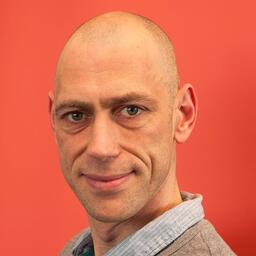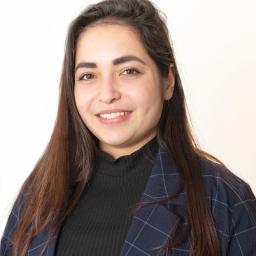Blood Transfusion Technology Group
Our main interest is the quality and safety of cellular blood products (red cell concentrates, platelet concentrates) isolated from whole blood or by apheresis. Research is focused on improved storage of erythrocytes and platelets, supported by studies of cell metabolism. With respect to pathogen reduction technology for cellular products we try to unravel the negative effects on the products from the pathogen reduction effect. Process improvement and development, evaluation of new products, disposables and/or equipment are started in the group at Blood Cell Research (proof of principle and scientific background) and continued in the department Product and Process Development of Sanquin Blood Bank (with final goal of implementation in production process). Improvement of disposables and equipment used in the Blood Bank process, also by contract research for a variety of companies.
Robin (R.) van Bruggen, PhD

Research lines
Development of allogeneic serum eye drops
Serum eye drops (SEDs) are used to treat patients with extreme dry eyes and other corneal defects. Serum is used in severe ophthalmic cases where conventional eye drops (artificial tears) have insufficient effect. The use of SEDs in dry eye patients usually has a rapid effect. Most patients claim the effect to be instantaneous, and all symptoms improve within 48 hours. There is evidence suggesting that substances in serum may help in the healing of epithelial defects, such as epidermal growth factor, fibroblast growth factor, fibronectin, and/or vitamin A. However, the precise serum factor responsible for alleviating the patient’s complaints is currently not known.
Commonly, autologous SEDs are used, but they are replaced more and more by allogeneic SEDs prepared from donor serum. Preparing autologous SEDs is often problematic due to patient-related problems and hospitals are not always equipped to produce these products under GMP conditions. The use of allogeneic SEDs will solve these problems. Allogeneic SED are derived from healthy voluntary, non-remunerated male donors with blood group AB, produced under blood bank GMP conditions, providing a safer product in larger quantities that is quickly available for each patient.
Within the project several characteristics of the SED are studied to learn more about the working mechanism. Changes are studied in relation to processing and storage time, like in growth factor content and ability to support corneal cell lines recovery after external damage by scratching. In the co-development with muDrop an innovative applicator will be used to pack the serum, allowing single use without too much waste of valuable serum.
Standardized allogeneic PRP for improved wound healing in acute and chronic wounds
Platelet-rich-plasma (PRP) is frequently used in the treatment of acute, chronic and diabetic wounds. Literature shows both positive results as well as no effect of the applied PRP in cardiac surgery, skin wound healing and cosmetic surgery, among others. This is mainly caused by the use of autologous PRP, produced under undefined conditions, with lack of details about the exact composition used in the various studies. This project focuses on the development of a standardized, allogeneic PRP composition and its application in both acute (burn wounds) and chronic (diabetes) wound care.
The ultimate goal of this project is to design a safe and well characterized blood product for improvement of wound healing in patients. By using allogeneic blood as starting point, we will avoid variability associated with autologous blood and additional burden to the patient. Moreover, at the end of the project a transfer to the Blood Bank is planned, to extend the current portfolio with a new blood product.
By culturing primary human dermal fibroblasts the effects of the different products were assessed by performing in-vitro scratch assays. An artificial wound is created in the cell monolayer and closure of the wound via migration is measured, in combination with measurements of cell proliferation. Also the effects on the differentiation of fibroblasts into myofibroblasts were measured by the expression of myofibroblast specific marker alpha-smooth muscle actin (a-SMA). High expression of a-SMA is found in scars. 10% PC-plasma resulted in more proliferation and migration compared to PC-PAS or plasma alone. Higher concentrations than 10% did not seem to give additional stimulation. The expression of a-SMA is decreased after stimulation with PC-plasma and PC-pas, but not with plasma. This indicates that platelet factors down regulate a-SMA expression and this might lead to better healing.
We also tested these products on the migratory and proliferative effects on the predominant cell type of the epidermis, the keratinocyte. Unfortunately, the three different cell populations used sofar gave different phenotypes after stimulation with our products. Therefore, to understand to effects of our products on keratinocytes an ex-vivo skin model will be used. We have measured growth factors in the different products using the luminex technology. PC-plasma is high in TGF-beta 1 and Platelet-derived growth factor in the nanogram/ ml range.
Key publications
- Peters AL, Beuger B, Mock DM, Widness JA, de Korte D, Juffermans NP, Vlaar AP, van Bruggen R. Clearance of stored red blood cells is not increased compared with fresh red blood cells in a human endotoxemia model. Transfusion. 2016;56:1362-9.
- De Back DZ, Vlaar R, Beuger B, Daal B, Lagerberg J, Vlaar APJ, de Korte D, van Kraaij M, van Bruggen R. A method for red blood cell biotinylation in a closed system. Transfusion. 2018 Feb 15. doi: 10.1111/trf.14535. [Epub ahead of print]
- Peters AL, van Hezel ME, Cortjens B, Tuip-de Boer AM, van Bruggen R, de Korte D, Jonkers RE, Bonta PI, Zeerleder SS, Lutter R, Juffermans NP, Vlaar AP. Transfusion of 35-Day Stored RBCs in the Presence of Endotoxemia Does Not Result in Lung Injury in Humans. Crit Care Med. 2016;44:e412-9
- van der Meer PF, Seghatchian J, de Korte D. Autologous and allogeneic serum eye drops. The Dutch perspective. Transfus Apher Sci. 2015;53:99-100
Funding
- PPOC, internal funding (in competition), several projects
- Co-development, Contract Research, several projects,
- Co-development project on allogeneic serum eye drops with muDrop
Robin (R.) van Bruggen, PhD

Lydian (L.) de Ligt

Naoual (N.) Ouazzani Chahdi

Dr Francesco (F.) Schianchi
